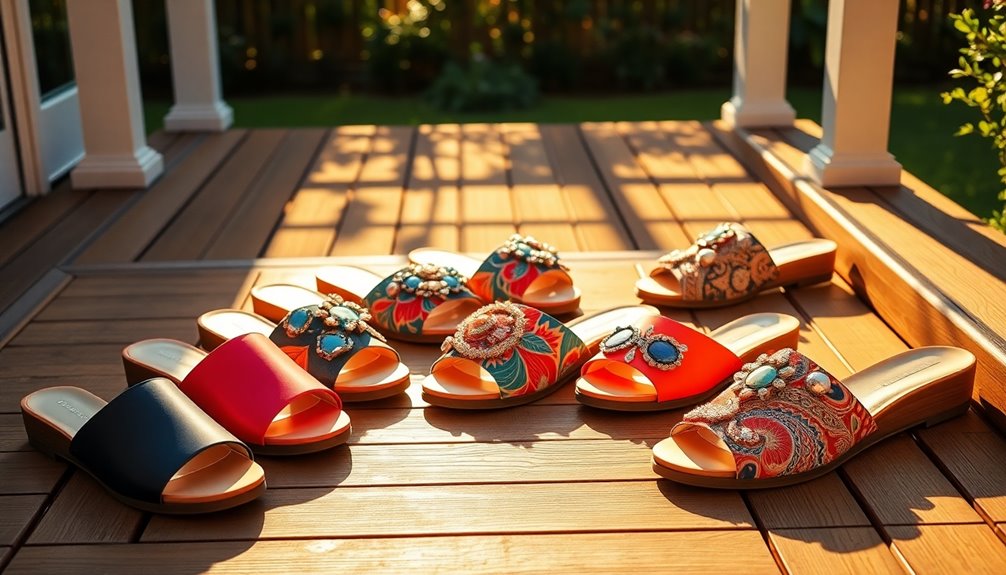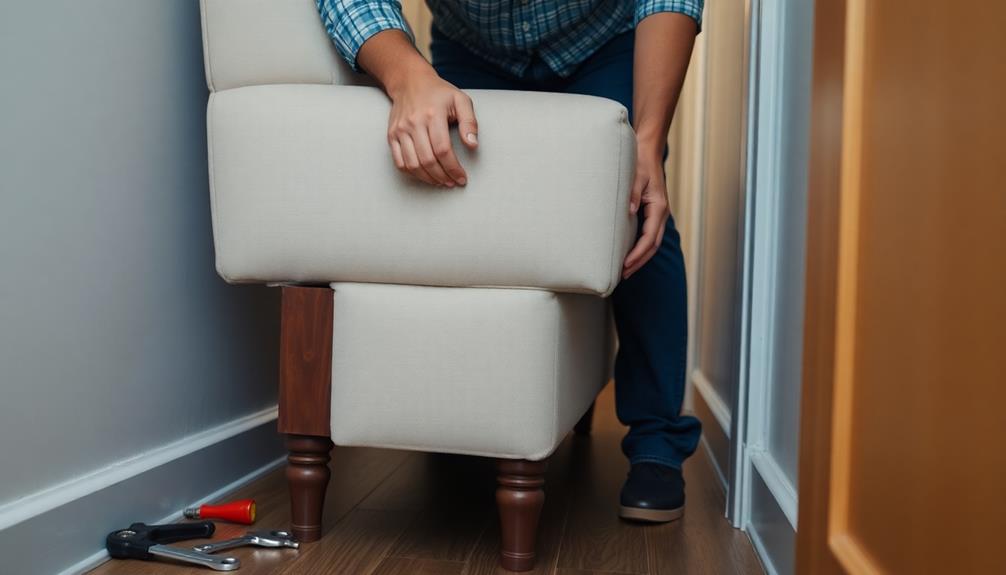Estimating the cost of your bathroom remodel begins with defining the scope of your project. Costs can range from $3,000 for minor updates to over $30,000 for a master bathroom. Break down the costs according to size: half bathrooms typically cost between $3,000 and $15,000, while full baths usually range from $5,000 to $20,000. Be sure to factor in labor costs, which average around $70 per hour, and allocate about 15% for unexpected expenses. Focus on cosmetic updates and consider hiring professionals to ensure high-quality work. Gain additional insights to make well-informed decisions as you plan your project.
Key Takeaways
- Determine the size of your bathroom, as costs vary significantly between half, full, and master bathrooms.
- Consider the average national remodel cost of $11,550 and budget accordingly for your specific needs.
- Factor in labor costs, averaging $70 per hour, and additional expenses for demolition and unforeseen repairs.
- Choose between budget-friendly cosmetic upgrades or a full remodel to align with your financial constraints.
- Gather multiple quotes from professionals to compare services and ensure you're getting a fair price.
Understanding Bathroom Remodels
Understanding bathroom remodels is vital for estimating your bathroom remodel cost accurately. The national average cost for a bathroom remodel in 2023 is around $11,550, with budget-friendly options starting at $3,000 and high-end projects potentially exceeding $25,000.
Mid-range bathroom remodels are particularly appealing, offering a 66.7% return on investment, according to the 2023 Cost vs. Value Report. When planning your remodel, consider how the principles of minimalism and decluttering can help create a more functional space.
Additionally, understanding the space constraints typical in tiny homes can guide your decisions on fixtures and storage solutions.
When considering updates, think about your existing shower and how you want to enhance the space. The size of your bathroom also plays a significant role in determining costs; half bathrooms can cost between $3,000 and $15,000, while master bathrooms range from $7,000 to $30,000.
Cost Breakdown by Size

The size of your bathroom plays an essential role in determining the overall remodel cost. Typically, half bathrooms, measuring 18-32 sq. ft., have bathroom remodel costs ranging from $3,000 to $15,000, depending on the changes you make.
Full bathrooms, which span 20-146 sq. ft., usually fall between $5,000 and $20,000 for remodeling costs. If you're tackling a master bathroom, which can range from 40-210 sq. ft., be prepared to budget between $7,000 and $30,000 for the project.
Understanding your budgeting essentials can also assist in managing these expenses effectively.
Accessibility-friendly bathrooms also factor into the cost breakdown, as they generally range from 20-210 sq. ft. and can set you back anywhere from $10,000 to $40,000 due to the specialized features required.
The size of the bathroom is significant, as larger spaces typically result in higher total project costs. You'll likely face increased material and labor costs, which contribute to the overall expense.
Understanding these cost ranges can help you plan your budget effectively, ensuring you're prepared for whatever size bathroom you're remodeling.
Labor and Demolition Expenses

Getting down to the nitty-gritty of your bathroom remodel, labor and demolition expenses can quickly add up and greatly impact your overall budget. The average labor cost for a bathroom remodel is about $70 per hour in 2023. This can considerably contribute to your total project expenses.
When it comes to demolition, expect to pay around $50 per structure, with specific costs for toilets ranging from $47 to $108 and tubs or showers between $59 and $108. It's important to factor in potential financial implications that might arise during such home projects.
Flooring demolition can also add to your expenses, costing between $83 and $152 per 100 square feet. Remember, factors like the complexity of the demolition, the size of your bathroom, and the condition of existing fixtures will influence the total labor costs incurred.
It's crucial to plan for potential additional labor expenses due to unforeseen repairs or structural issues that may arise during the demolition process. By considering these factors, you can better manage your budget and avoid unpleasant surprises as your bathroom remodel progresses.
Cost-Saving Strategies

Finding ways to save money during your bathroom remodel can make a considerable difference in your overall budget. One effective cost-saving strategy is to maintain the existing bathroom layout. This approach minimizes plumbing and electrical work, considerably reducing bathroom remodel costs.
Instead of a complete overhaul, consider prioritizing cosmetic updates. A fresh coat of paint or replacing fixtures can transform the space at a fraction of the price of a full remodel. Additionally, just as various brewing methods affect caffeine content in coffee, the choice of materials can greatly influence your remodel budget.
When selecting materials, opt for budget-friendly options. Simple shower pans and rectangular tiles are often more affordable yet still stylish. Additionally, don't overlook the impact of budget-friendly accessories like towel racks and mirrors. These can enhance your bathroom features without breaking the bank.
It's also wise to set aside about 15% of your total budget for unexpected repairs or supply problems. This contingency fund helps you manage unforeseen expenses that can arise during renovations.
Hiring Professionals and Tools

When it comes to hiring professionals for your bathroom remodel, gathering multiple quotes from local experts is essential. This allows you to compare pricing and services effectively, ensuring you find the right bathroom remodeler for your needs.
Additionally, much like the value of home security systems, investing in qualified professionals can greatly enhance the results of your project. Use a contractor checklist to assess each remodeler's qualifications, experience, and references. This step is critical for ensuring quality workmanship and avoiding potential pitfalls.
Clear communication of project expectations, timelines, and budget constraints is fundamental. Be upfront about what you want and need, as this will help avoid misunderstandings during the remodeling process.
To get a better grasp on expenses, employ a bathroom remodel cost calculator, which can provide estimates based on your desired features and materials. When estimating bathroom remodel cost, it’s important to consider all the elements that will go into the project such as labor, materials, fixtures, and any additional features. A cost calculator can help you get a more accurate picture of what the project will entail and allow you to budget accordingly. By inputting different options and materials into the calculator, you can make informed decisions about where to allocate your budget for the best results.
Before you hire professionals, establish a solid design plan. This not only streamlines the process but also helps manage costs effectively. Having a clear vision will encourage contractors to provide more accurate quotes and align their work with your expectations.
Frequently Asked Questions
What Is the Most Expensive Part of a Bathroom Remodel?
The most expensive part of your bathroom remodel often involves replacing the bathtub or shower. This typically consumes a significant portion of your budget due to the complexity of installation and quality materials required.
How Much Should You Spend on a Bathroom Remodel?
You should spend based on your needs and preferences. Typically, mid-range remodels cost between $10,000 and $25,000. Consider your bathroom's size, layout, and desired features to determine what fits your budget and lifestyle.
How Do I Quote a Bathroom Renovation?
To quote a bathroom renovation, you'll assess the project scope, itemize expenses, and factor in labor and materials. Remember to account for unexpected costs and provide a clear estimate to manage expectations effectively.
What Is the ROI of a Bathroom Remodel?
Isn't it fascinating how a bathroom remodel can boost your home's value? You can expect a mid-range remodel to return about 66.7% of your investment, while upscale ones may yield around 53.5%. Choose wisely!
Conclusion
In a world where bathroom remodels could cost as much as a luxury car or a trip to space, you can still make smart choices! By grasping the ins and outs of costs and implementing savvy strategies, you might just transform your mundane bathroom into a spa-like oasis without breaking the bank. With the right planning and a sprinkle of creativity, your dream bathroom is within reach, and you won't need to sell a kidney to afford it!









